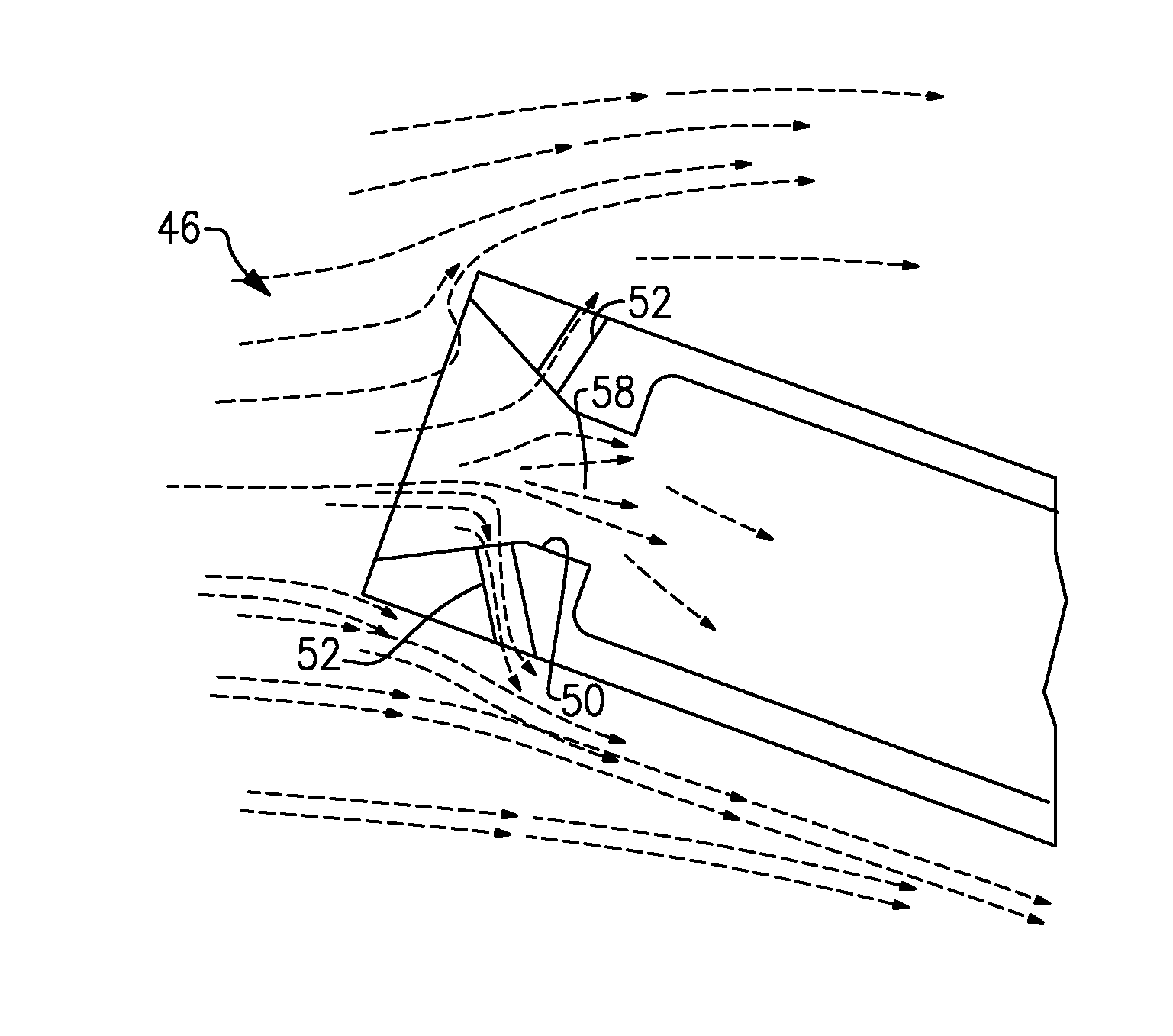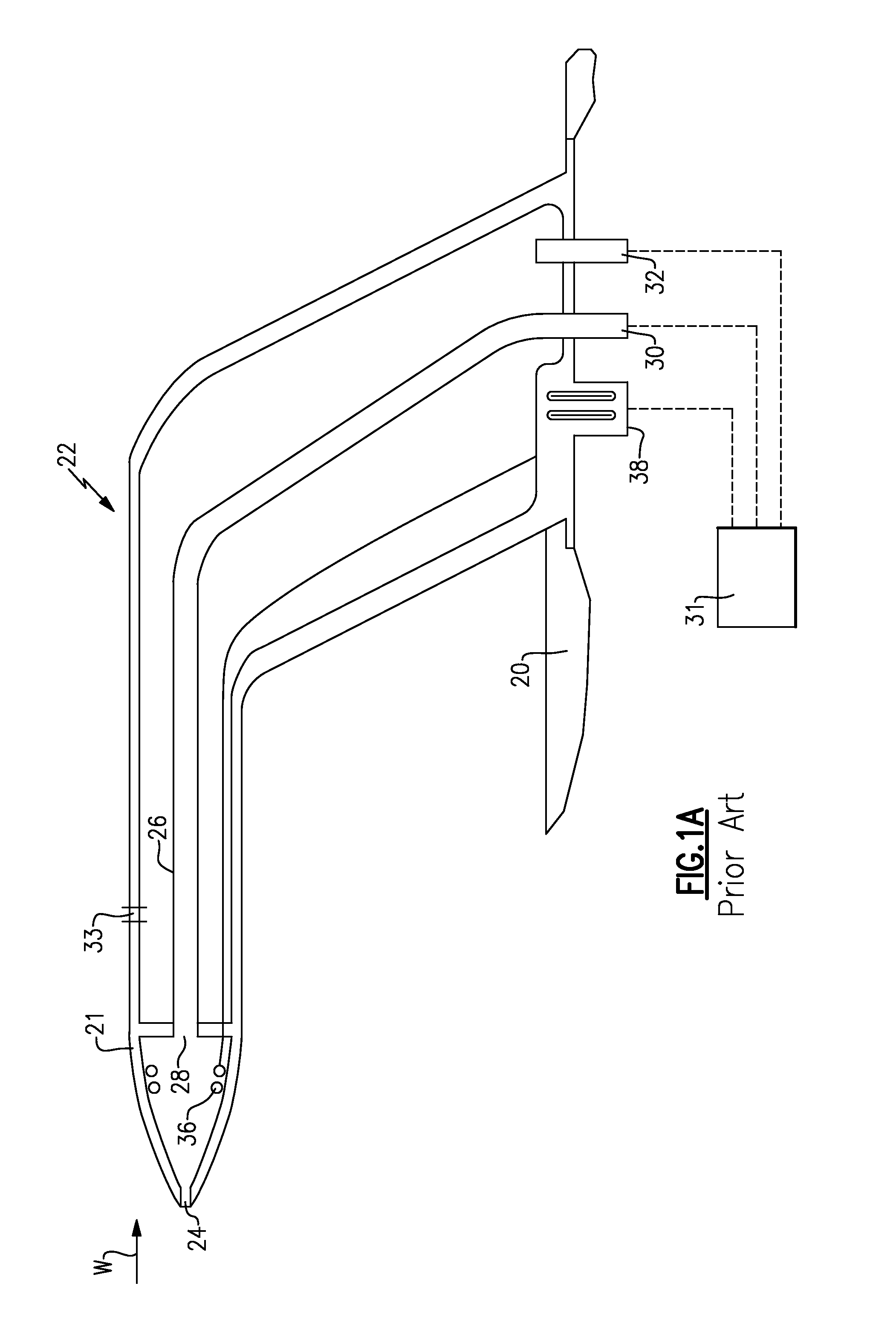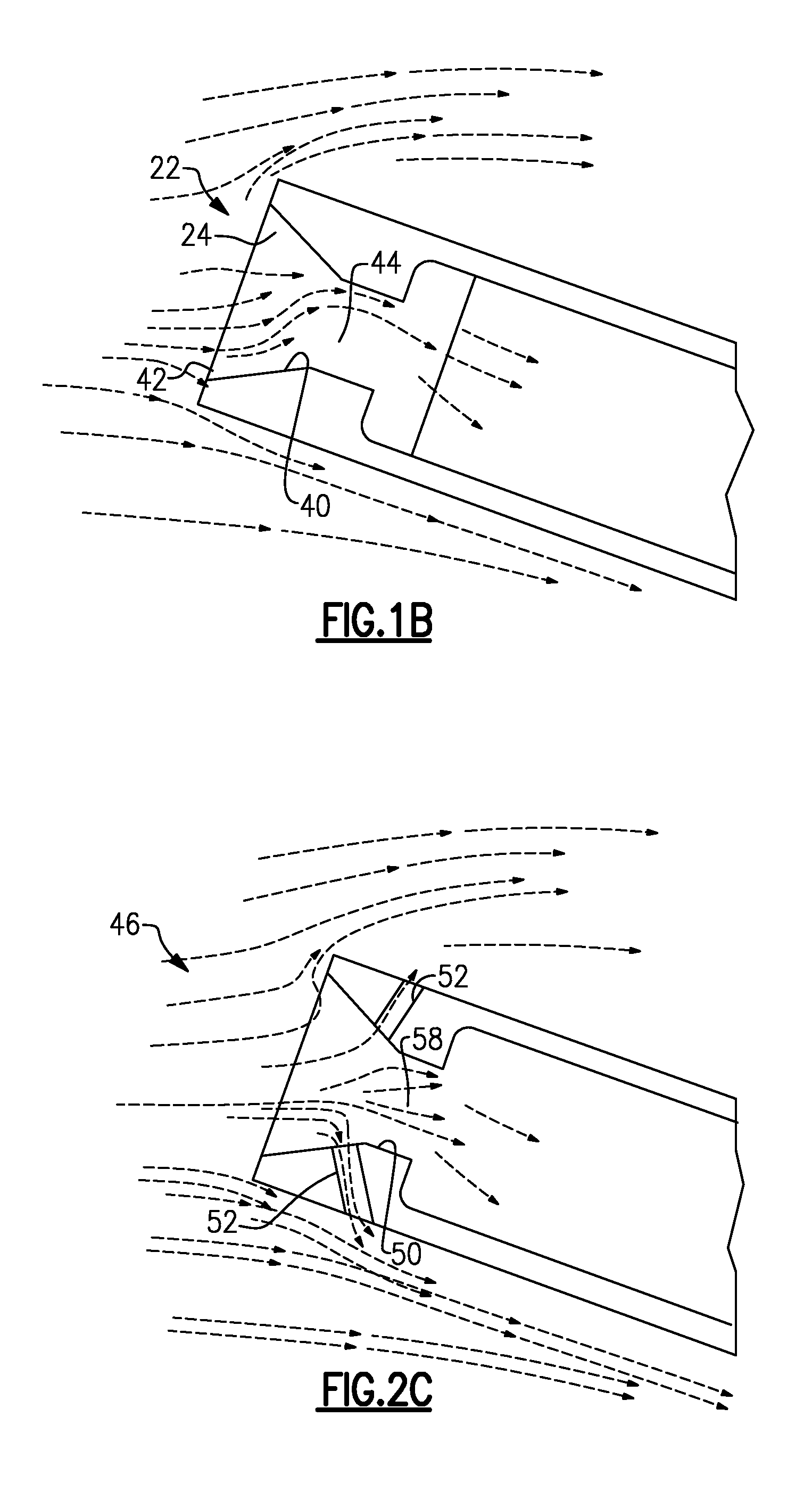Air Data Probe With Improved Performance at Angle of Attack Operation
- Summary
- Abstract
- Description
- Claims
- Application Information
AI Technical Summary
Benefits of technology
Problems solved by technology
Method used
Image
Examples
embodiment 46
[0019]FIG. 2A shows an embodiment 46 wherein the tap 47 extends from an outer end 48 inwardly toward a throat 50. A plurality of bleed holes 52 extend through a body of the air data probe 46 from an outlet 54 at an outer peripheral surface to an inlet 56 at an inner surface 57. Inner surface 57 of the air data probe 46 extends from the outer end 48 at an angle that decreases the cross-sectional area of an inner flow path as it moves inwardly until it reaches the throat 50. The bleed hole 52 has inlet 56 upstream of the throat 50.
[0020]FIG. 2B is a view showing a plurality of bleed holes 52. The quantity, size and location of the bleed holes 52 may be selected for specific operation in a particular environment.
[0021]FIG. 2C shows the operation of the air data probe 46. Air entering through the bleed holes 52 leaves the inner flow path, eliminating the recirculation and boundary layer separation illustrated in FIG. 1B. As shown, there is now uniform flow.
embodiment 60
[0022]FIG. 3A shows an embodiment 60 wherein the tap 62 has a forward end 66 with a fluted slot with a circumferentially thin portion 64 leading into a circumferentially enlarged opening 68. Other areas 70 of the tap 62 do not have the slots 64 / 68.
[0023]As shown in FIG. 3B, there are slots 64 / 68 on opposed sides with intermediate generally cylindrical portions 70. Notably, the slots 64 / 68 end at the throat 72.
[0024]The slots 64 / 68 assist in bringing air in to reduce recirculation and boundary layer separation, similar to the FIG. 2A-2C embodiment.
[0025]Generically, the FIGS. 2A-2C and FIGS. 3A, 3B embodiments could be said to have removed material to assist in providing additional air pressure.
[0026]The FIGS. 2A-2C, and FIGS. 3A / 3B embodiment could be said to have a pitot tube with a tap at a forward end, and defining an inner flow path. The inner flow path decreases in cross-sectional area until reaching a throat. The inner flow path has cross-sections which are generally cylindric...
embodiment 74
[0027]FIG. 4B shows yet another embodiment 74. Embodiment 74 could be seen as a “long nose” air data probe. A nose 76 is provided with a relatively small diameter d1. The diameter d1 extends through a long nose that is generally straight or slightly tapered across a distance d2. At an enlarged area 78, the diameter begins to increase to provide room for receiving a heater element 80. The enlarged area 78 is at a diameter d3. A bleed hole 82 may be incorporated much like the FIG. 2A-2C embodiments.
[0028]In embodiments, a relationship exists between the ratio of d3 / di to d2. The d3 quantity is controlled by physical characteristics of the probe tube and the heater element 80. The d1 quantity is controlled by environmental conditions in which the probe is required to operate.
[0029]A ratio of d1 to d3 identifies how long d2 should be. Applicant has discovered a constant that is associated with the relationship of the three quantities. Thus, the following relationship preferably applies:...
PUM
 Login to View More
Login to View More Abstract
Description
Claims
Application Information
 Login to View More
Login to View More - R&D
- Intellectual Property
- Life Sciences
- Materials
- Tech Scout
- Unparalleled Data Quality
- Higher Quality Content
- 60% Fewer Hallucinations
Browse by: Latest US Patents, China's latest patents, Technical Efficacy Thesaurus, Application Domain, Technology Topic, Popular Technical Reports.
© 2025 PatSnap. All rights reserved.Legal|Privacy policy|Modern Slavery Act Transparency Statement|Sitemap|About US| Contact US: help@patsnap.com



